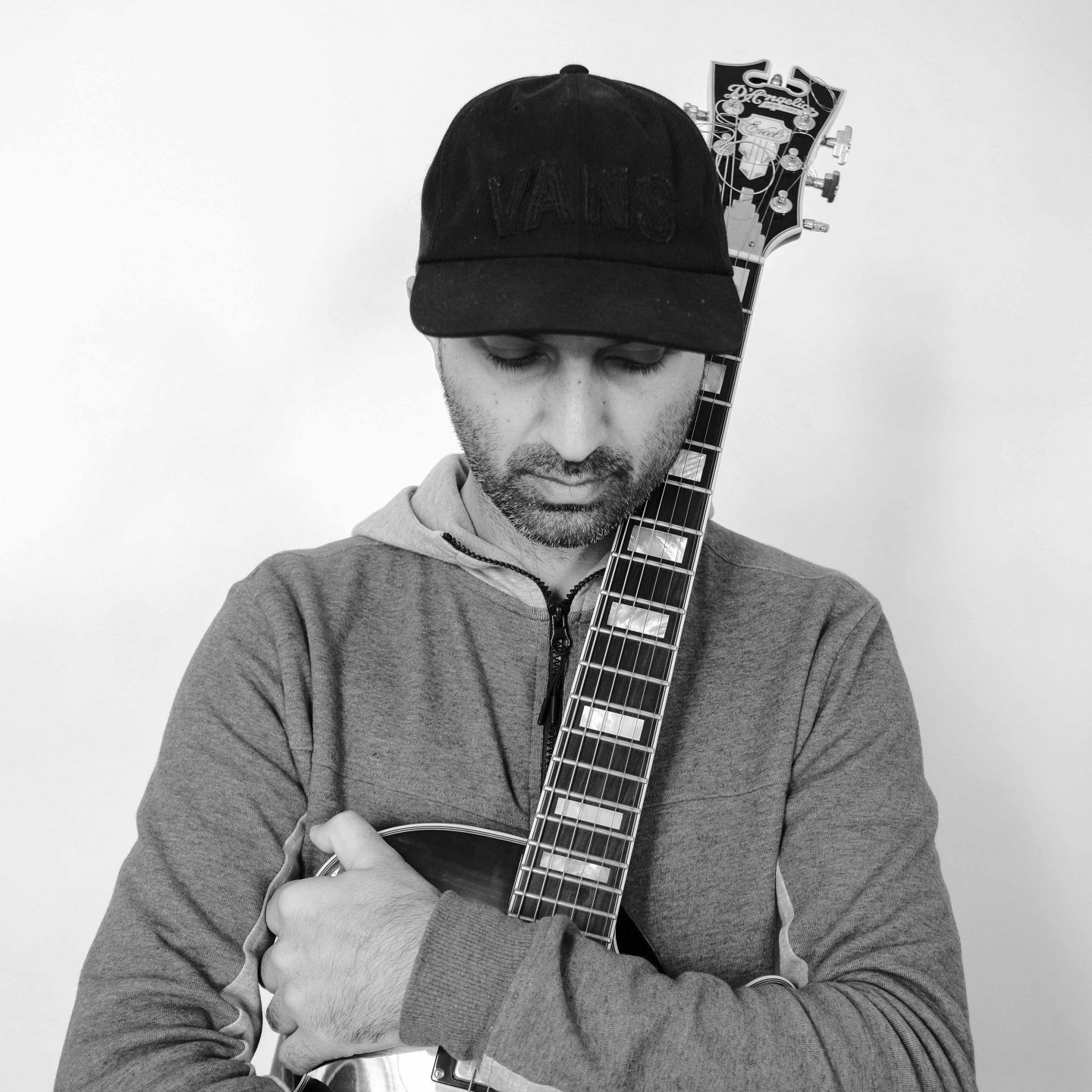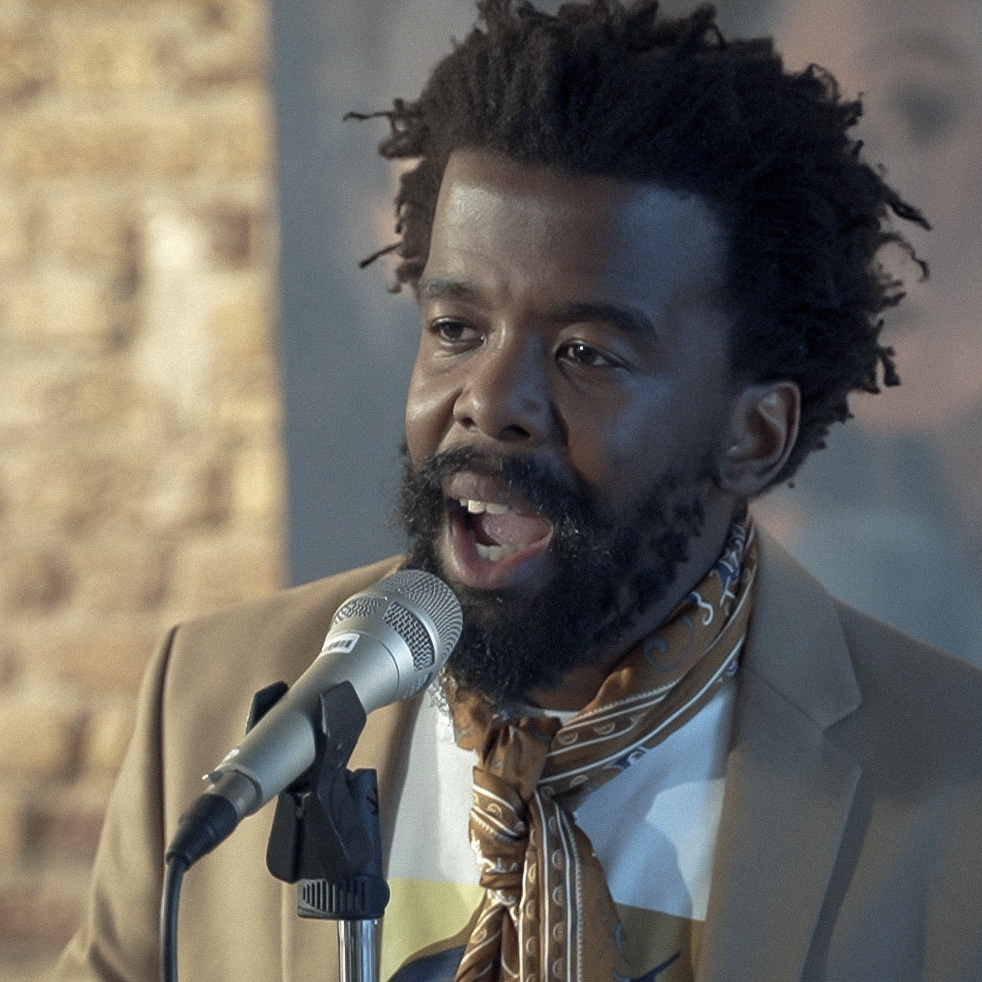New Horizons is an ode to fresh sounds
The first of its kind to be released on vinyl, the 12-track double LP compilation features contemporary jazz artists from South Africa, securing an international distribution deal to ensure the fur…
Author:
18 September 2020

The upcoming New Horizons album breaks ground, as the first compilation of contemporary South African jazz artists to be released on vinyl. In many ways, this record is long overdue and stands as an ode to a generation of musicians whose roots go back well over a decade. It is the much-needed documentation of a music scene that has been thriving despite the battles to keep it afloat.
The album is the brainchild of Afrosynth label owner Dave Durbach. He collaborated with jazz bassist Shane Cooper to release the compilation. Durbach founded the Afrosynth record store in Maboneng in 2016, which was forced to close its doors in May as a result of the Covid-19 lockdown. He doubles as DJ Okapi and his website documents a plethora of hard-to-find South African music. Durbach’s label of the same name has released various albums over the years, including a slew of South African disco and kwaito reissues.
Cooper is well-established in the South African music scene as a bassist and bandleader in the jazz sphere, but also as electronic producer Card on Spokes. “We wanted to select some of the most prolific artists from the younger generation,” he says of the selection of music on New Horizons, “that we thought were representative of the modern South African jazz sound over the last few years. And to show the vastness of that sound, to show where the music has evolved, how much it has evolved and how diverse it is.”
Creating in community
Assembling this compilation was a communal effort in which the artists played a substantial role. Durbach had worked on compilations before and knew the process behind making them and the risks taken. Mabuta, the band led by Cooper, was one of Afrosynth’s previous releases. The record was pressed in 2018 and distributed through Amsterdam record store and label Rush Hour Records, represented by Antal Heitlager. When Durbach conceived of the idea for New Horizons, he approached Heitlager, who expressed interest in releasing the album based on the success of Mabuta’s record.
“I thought that what I can offer in terms of my skills is getting this music pressed on vinyl and getting it released to an international market, because of this partnership with Rush Hour, who have afforded me this opportunity to be able to press, distribute and sell the records,” says Durbach.
Durbach asked Cooper early on to co-curate the album. The result is a 12-track, double-LP comprising tracks from 2014 to 2020. The liner notes are beautifully penned by jazz writer Sam Mathe and the gatefold features images of each artist and the band line-up. Visual artist Michael MacGarry created the artwork. The cover features an image of Pluto taken by Nasa’s New Horizons exploratory space probe. Durbach says New Horizons was also the name of an album by jazz saxophonist Teaspoon Ndelu from the 1980s.


Jazz, over generations
The beauty of this compilation lies in its diversity. The album features an impressive line-up of the Benjamin Jephta Quintet, Thandi Ntuli, Mabuta, the Kyle Shepherd Trio, Lwanda Gogwana, the Siya Makuzeni Sextet, the Bokani Dyer Trio, Vuma Levin, the Reza Khota Quartet, Mandisi Dyantyis and Yonela Mnana.
“I got a sense that there was a new generation of artists emerging who weren’t necessarily given the respect they deserve,” Durbach says. “As someone interested in South African history and how music relates to it, I could also note that when people talk about South African jazz they still talk about the legends or the older generation.”
This generation of musicians has kept the flames burning for what is now considered jazz, a contested term in its own right. Jazz has generally been accepted as black music that evolved from the edges of society, tracing as far back as the 1920s in South Africa. During apartheid, jazz became synonymous with struggle music. It was also considered too intellectual, high-brow and compex for black artists and was often banned because of its ability to mobilise people. And yet, even though many of the artists on the album emerge in a postapartheid South Africa, the struggle to survive has not become any easier.
Right: Undated: Trombonist and vocalist Siya Makuzeni and her Sextet perform “Out of This World” (Photograph by Tseliso Monaheng)
Right: Undated: Pianist Kyle Shepherd appears with his trio and the track from their 2014 album “Dream State”. (Photograph by Gregory Franz)
The shaping of a scene
A study of the liner notes provides evidence of the strength of this music community. It’s easy to connect the dots in what appears to be a close network of musicians. This parallels the way the current British jazz scene has exploded over the past few years, with artists appearing on each other’s albums and supporting each other.
“The fact that they’re featuring on each other’s albums is a sign that a scene is developing and a community of artists,” says Durbach.

Right: Undated: Pianist Yonela Mnana features with the track “Leagan”. (Photograph by Rangoato Hlasane)
Credit must be given here to the contributing factors that shaped this scene. Many of these artists started performing at an extremely young age, as apartheid was ending. Some were lucky to have good teachers or music mentors. Others emerged from universities. There is also the undeniable role of music venues as being nurturing grounds for many of them.
In Cape Town, it was the late-night Monday Night Jazz Jam at Swingers in Wettyn. There were also open spaces such as Tagore’s in Observatory, which encouraged live performances and provided an audience. It was a pleasure seeing musicians line up to be part of the audience at The Mahogany Room, later known as Straight No Chaser, in the city centre.
In Johannesburg, the influence of music venues such as Kippies in Newtown was vital. Later, spaces like The Orbit and Afrikan Freedom Station also celebrated these artists. All these iconic venues closed down over the years, and the struggle to find performance spaces for original live music continues.
Despite the immense effort it takes to create their music, jazz musicians have to live on what they earn from gigs and album sales. They generally do not get much radio play, nor are there many performance spaces available to them now.
“I also empathised with the fact that as talented and as hardworking as all the artists are, and as they move from becoming session artists to becoming their own bandleaders with their own compositions and putting out their own projects, which takes a massive leap of faith and confidence and professionalism, there isn’t a massive amount of reward for them, whether social or financial,” says Durbach. “It’s unfortunate and it’s really sad that the artists who invest the most in their knowledge and their skills are the ones who don’t really get rewarded for the years of the work they put into it.”
Modelling a vinyl future
The significance of this release is that there are no pressing plants for vinyl in South Africa. Many shut down with the advent of CDs and the digital age. This makes it expensive for any musician in the country who wants their music pressed on vinyl. It has to be done overseas, with Europe being the closest geographically for the best quality.
Since 2013, however, interest in records has grown in South Africa. When CD stores were closing, independent record stores were opening. In any major city in South Africa, not only will you find a handful of record stores but also a community of record collectors and DJs performing at vinyl-only gatherings. And collectors wanting a more authentic South African identity want to own local sounds.
Right: Undated: The members of Mabuta led by bassist Shane Cooper, feature with the previously unreleased track “Slipstream”. (Photograph by Aidan Tobias)
Aside from having the music of these talented artists’ finally pressed on vinyl, New Horizons functions primarily to introduce the music to a greater global community and international market that it might otherwise be difficult to reach. Through Rush Hour’s distribution channels, the music has further reach. The significance of a record store owner, DJ and label head joining forces with a musician on an album is definitely a model to consider for future collaborations on releases. It means the music is released from within, with the artists being offered upfront transparency on royalties and licensing.
By no means is the compilation an exhaustive list of all the upcoming young artists contributing to the jazz movement right now. The format of a record meant space was a real constraint. “It’s important for me to say there are some people that we couldn’t include for various reasons,” Cooper says, “so by no means would we claim that this is the ultimate, definitive list. Not every artist we would have loved to have is included in this release, but we still feel this is a really strong selection that displays the strength and the diversity of the modern sounds in a very true way.”
Right: Vocalist and Trumpeter Mandisi Dyantyis features with the track “Kuse Kude”. (Photograph by David Stone)
Most of the magic of jazz occurs during live performances. But this album is a great place to start in acknowledging the voices of the modern jazz movement who have been working consistently to push the boundaries of sound. Not only are they masters of their instruments, they are also carrying the soul of a postapartheid generation into the future.
The album comes out on 21 September and is available at all good record stores. Visit www.afrosynth.com for more info.











